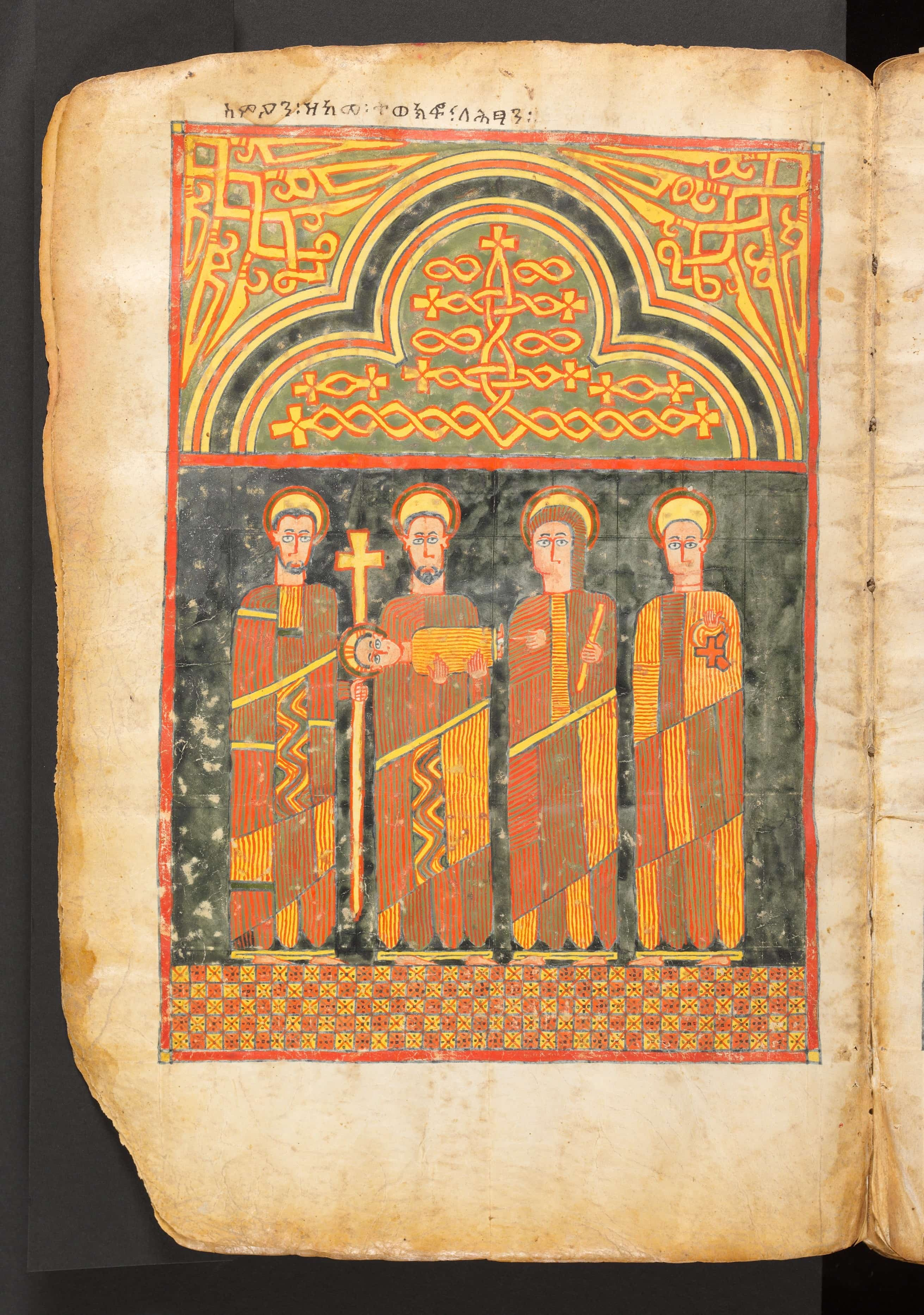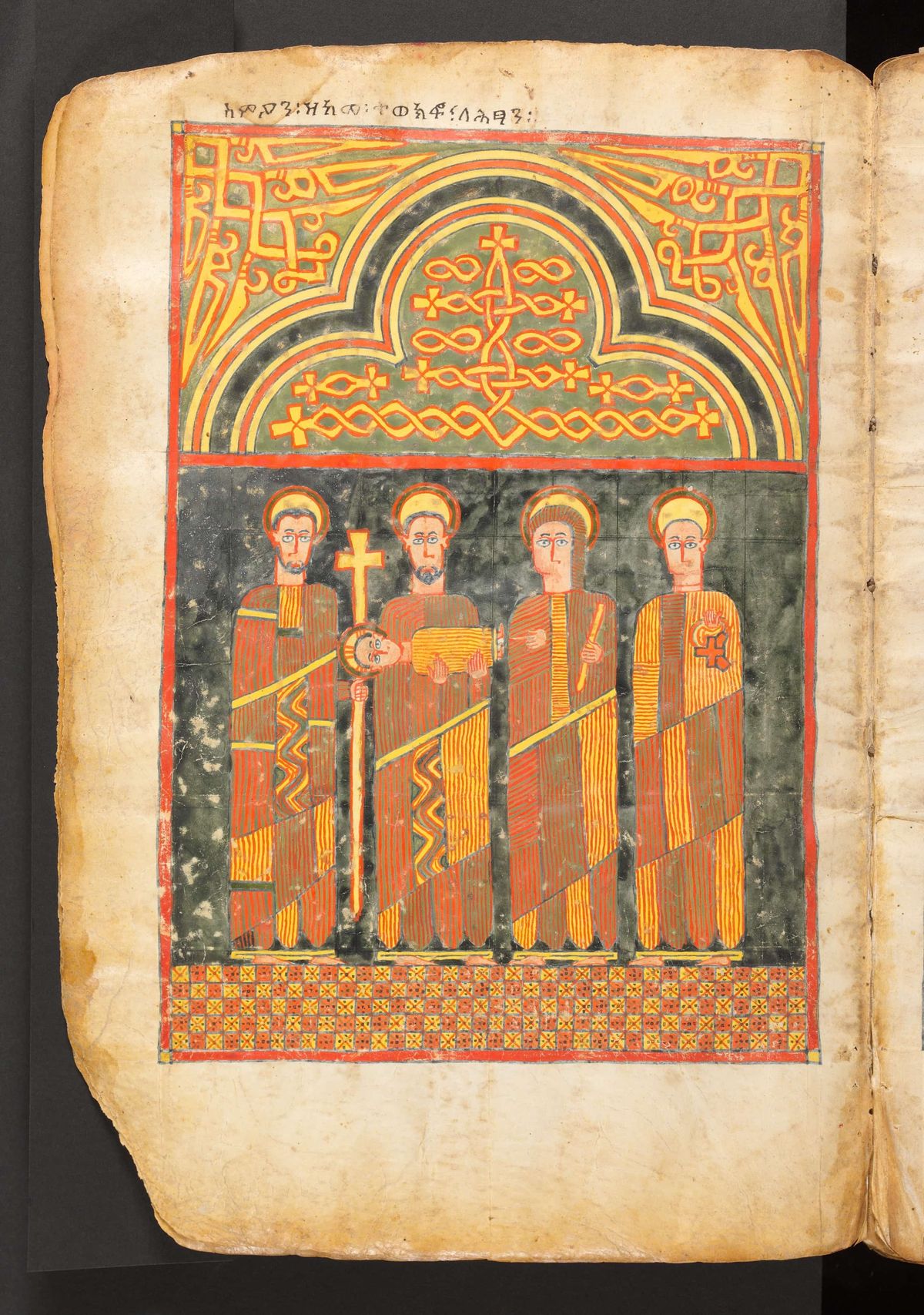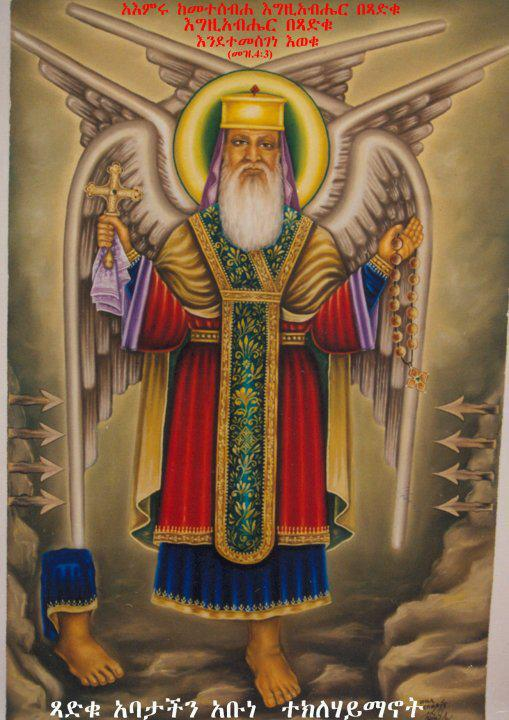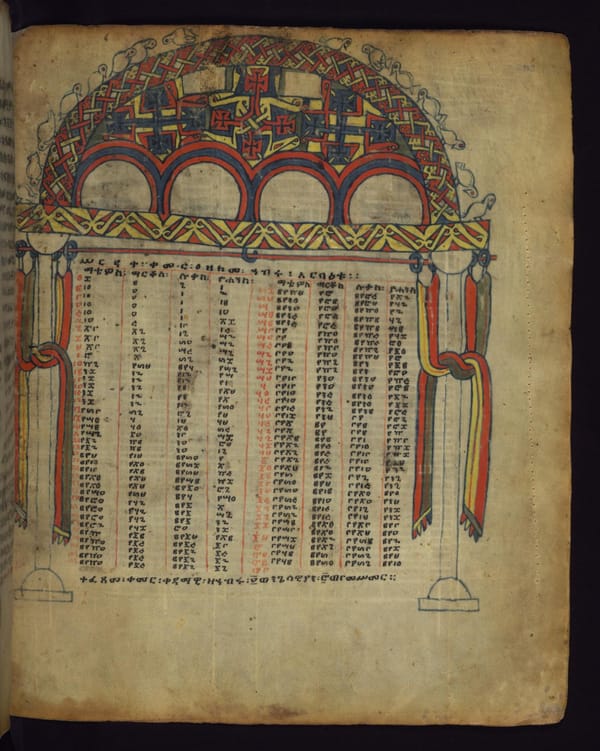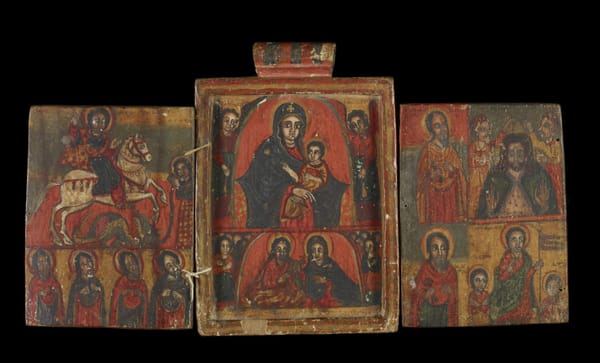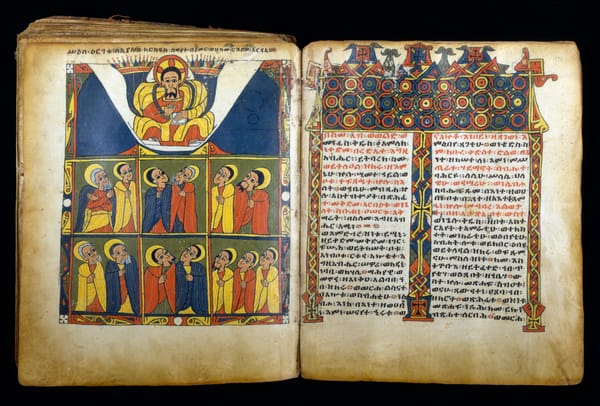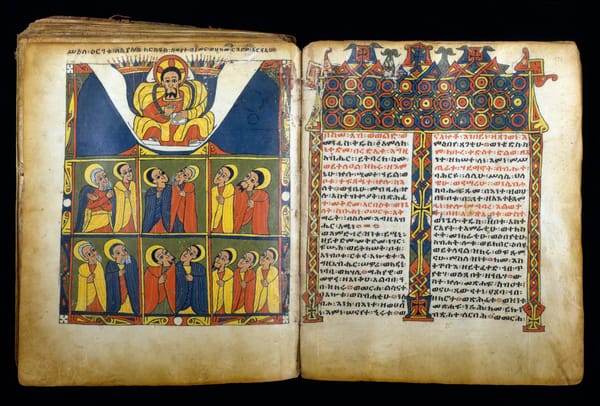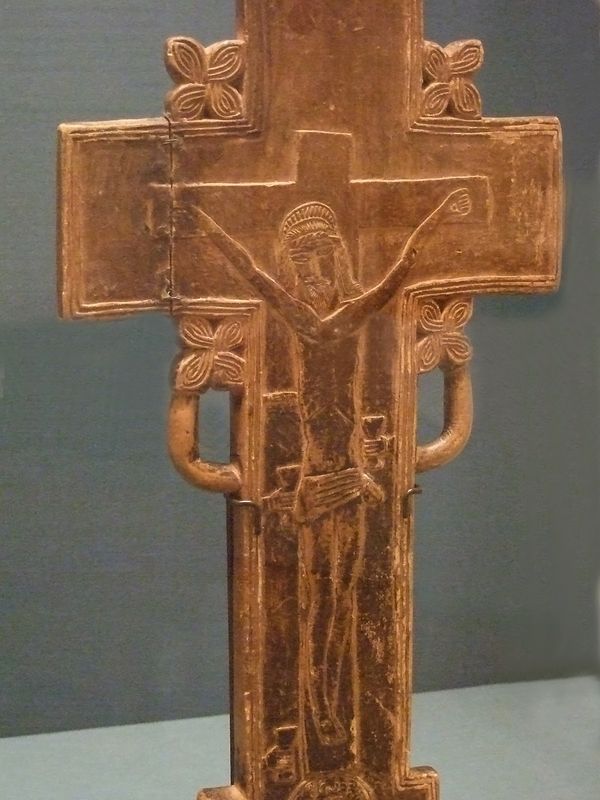Details:
This illuminated manuscript of the Four Gospels was created at a monastic center in northern Ethiopia. Twenty full-page paintings depict scenes from the life of Christ and four portraits of the evangelists introduce the respective Gospel texts. The New Testament was translated from Greek into Geez, the classical language of Ethiopia, in the sixth century. Both this text and its pictorial format draw upon Byzantine prototypes, which were transformed into a local idiom of expression. Stylistically consistent, the paintings reflect the hands of two distinct artists. The color scheme consists of red, yellow, green, and blue. A stylized uniformity is reflected in the abbreviated definition of facial features and the bold linear articulation of the human form in black and red. Figures' heads are depicted frontally, their bodies often in profile. Bodies are treated as columnar masses encased in textiles composed of striated fields juxtaposed against one another.
